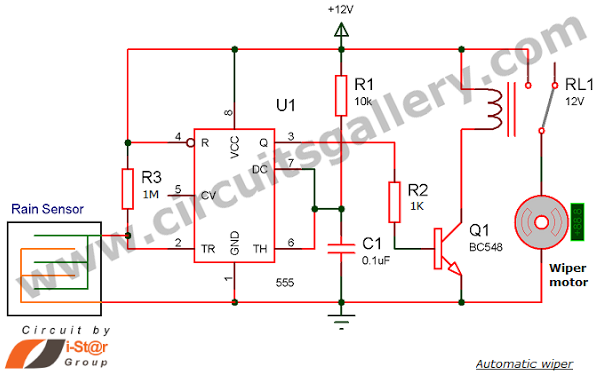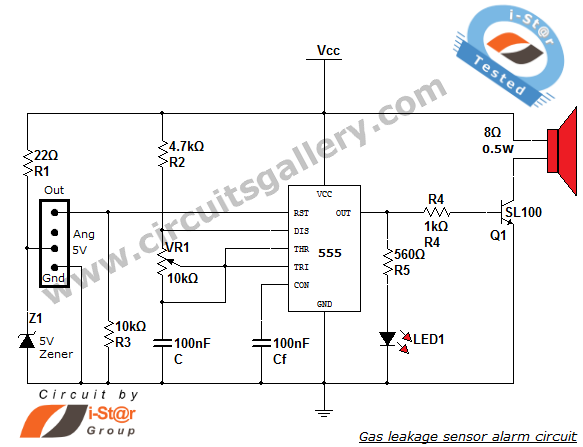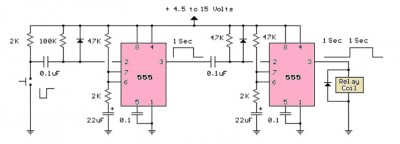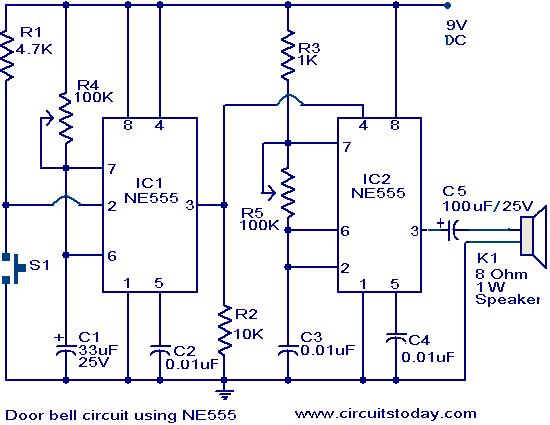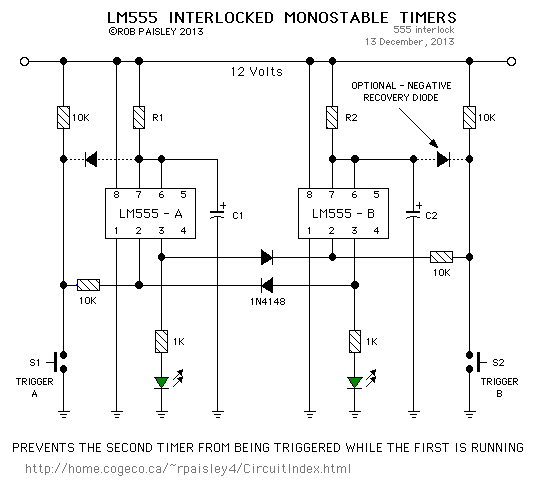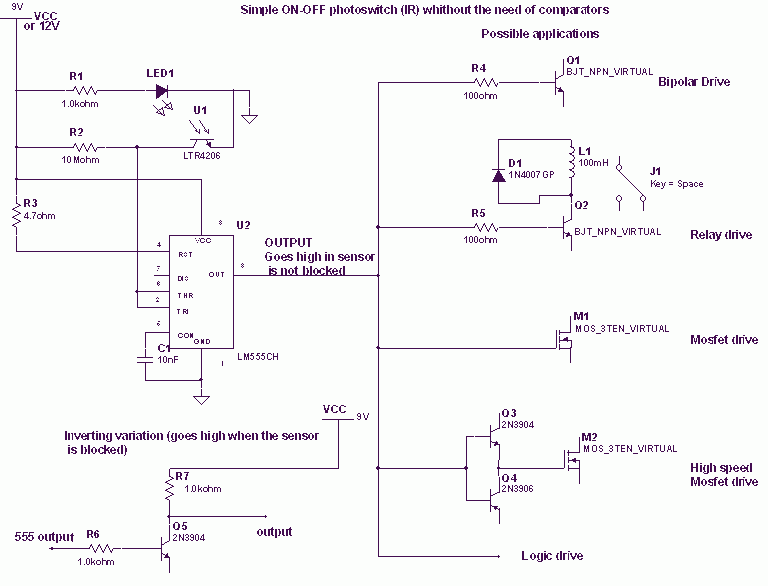
Triggering a 555 with another
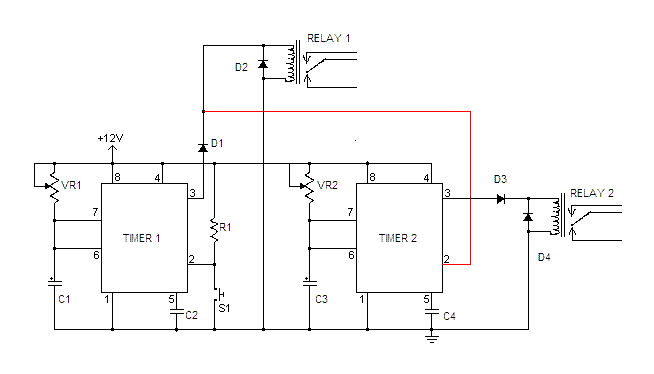
Can anyone inform me whether the output of a monostable 555 timer circuit can be utilized to trigger another similar timer circuit? I have illustrated my concept with a...
The monostable 555 timer circuit is a versatile component widely used in timing applications. In a monostable configuration, the 555 timer produces a single output pulse in response to a triggering event, which can be an external signal or a manual switch. This output pulse duration is determined by the resistor-capacitor (RC) timing network connected to the timer.
When considering the output of one monostable 555 timer circuit as a trigger for another similar circuit, it is essential to analyze the characteristics of the output signal. The output of the first timer is typically a square wave pulse, which can be used to trigger the second timer circuit's input. The second 555 timer can be configured in monostable mode to generate its own pulse in response to the trigger received.
To ensure proper operation, the output voltage level of the first timer must be compatible with the trigger input of the second timer. The 555 timer outputs a high state close to the supply voltage when triggered, and this should be within the acceptable input voltage range for the second timer. Additionally, the pulse width of the output from the first timer should be sufficient to reliably trigger the second timer. It is advisable to design the timing parameters of the first timer to accommodate the trigger requirements of the second timer.
In summary, the output of a monostable 555 timer can indeed be used to trigger another similar timer circuit, provided that the output characteristics align with the input requirements of the second timer. Proper consideration of voltage levels and timing parameters will facilitate the successful cascading of multiple 555 timer circuits in a design.Can anybody tell me if the output of a monostable 555 timer circuit can be used to trigger another similar timer circuit. I have shown my idea with a.. 🔗 External reference
The monostable 555 timer circuit is a versatile component widely used in timing applications. In a monostable configuration, the 555 timer produces a single output pulse in response to a triggering event, which can be an external signal or a manual switch. This output pulse duration is determined by the resistor-capacitor (RC) timing network connected to the timer.
When considering the output of one monostable 555 timer circuit as a trigger for another similar circuit, it is essential to analyze the characteristics of the output signal. The output of the first timer is typically a square wave pulse, which can be used to trigger the second timer circuit's input. The second 555 timer can be configured in monostable mode to generate its own pulse in response to the trigger received.
To ensure proper operation, the output voltage level of the first timer must be compatible with the trigger input of the second timer. The 555 timer outputs a high state close to the supply voltage when triggered, and this should be within the acceptable input voltage range for the second timer. Additionally, the pulse width of the output from the first timer should be sufficient to reliably trigger the second timer. It is advisable to design the timing parameters of the first timer to accommodate the trigger requirements of the second timer.
In summary, the output of a monostable 555 timer can indeed be used to trigger another similar timer circuit, provided that the output characteristics align with the input requirements of the second timer. Proper consideration of voltage levels and timing parameters will facilitate the successful cascading of multiple 555 timer circuits in a design.Can anybody tell me if the output of a monostable 555 timer circuit can be used to trigger another similar timer circuit. I have shown my idea with a.. 🔗 External reference
